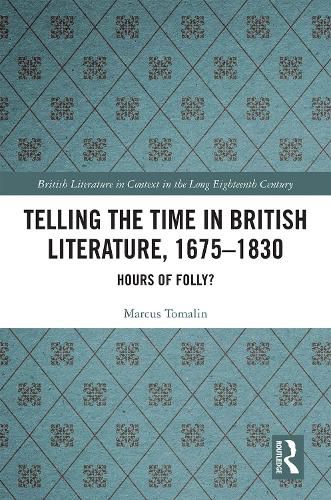Readings Newsletter
Become a Readings Member to make your shopping experience even easier.
Sign in or sign up for free!
You’re not far away from qualifying for FREE standard shipping within Australia
You’ve qualified for FREE standard shipping within Australia
The cart is loading…






Although the broad topic of time and literature in the long eighteenth century has received focused attention from successive generations of literary critics, this book adopts a radically new approach to the subject. Taking inspiration from recent revisionist accounts of the horological practices of the age, as well as current trends in ecocriticism, historical prosody, sensory history, social history, and new materialism, it offers a pioneering investigation of themes that have never previously received sustained critical scrutiny. Specifically, it explores how the essayists, poets, playwrights, and novelists of the period meditated deeply upon the physical form, social functions, and philosophical implications of particular time-telling objects. Consequently, each chapter considers a different device - mechanical watches, pendulums, sandglasses, sundials, flowers, and bells - and the literary responses of significant figures such as Alexander Pope, Anne Steele, William Wordsworth, Samuel Taylor Coleridge, Charlotte Smith, and William Hazlitt are carefully examined.
$9.00 standard shipping within Australia
FREE standard shipping within Australia for orders over $100.00
Express & International shipping calculated at checkout
Although the broad topic of time and literature in the long eighteenth century has received focused attention from successive generations of literary critics, this book adopts a radically new approach to the subject. Taking inspiration from recent revisionist accounts of the horological practices of the age, as well as current trends in ecocriticism, historical prosody, sensory history, social history, and new materialism, it offers a pioneering investigation of themes that have never previously received sustained critical scrutiny. Specifically, it explores how the essayists, poets, playwrights, and novelists of the period meditated deeply upon the physical form, social functions, and philosophical implications of particular time-telling objects. Consequently, each chapter considers a different device - mechanical watches, pendulums, sandglasses, sundials, flowers, and bells - and the literary responses of significant figures such as Alexander Pope, Anne Steele, William Wordsworth, Samuel Taylor Coleridge, Charlotte Smith, and William Hazlitt are carefully examined.